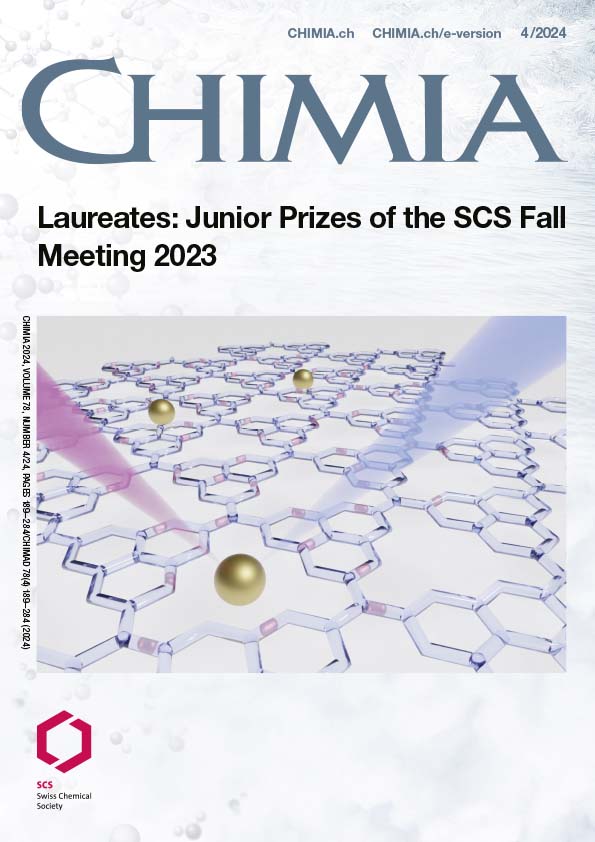Oxidative Defect Detection Within Free and Packed DNA Systems: A Quantum Mechanical/Molecular Mechanics (QM/ MM) Approach
DOI:
https://doi.org/10.2533/chimia.2024.243PMID:
38676618Keywords:
Chromatin, DNA, Molecular dynamics, Oxidative damage, QM/MMAbstract
Base excision repair enzymes (BERs) detect and repair oxidative DNA damage with efficacy despite the small size of the defects and their often only minor structural impact. A charge transfer (CT) model for rapid scanning of DNA stretches has been evoked to explain the high detection rate in the face of numerous, small lesions. The viability of CT DNA defect detection is explored via hybrid QM/MM computational studies that leverage the accuracy of quantum mechanics (QM) for a region of interest and the descriptive power of molecularmechanics (MM) for the remainder of the system. We find that the presence of an oxidative lesion lowers theredox free energy of oxidation by approximately 1.0 eV regardless of DNA compaction (free DNA versus packed DNA in nucleosome core particles) and damage location indicating the high feasibility of a CT-based process for defect detection in DNA.
Funding data
-
Schweizerischer Nationalfonds zur Förderung der Wissenschaftlichen Forschung
Grant numbers 200020-185092;200020-219440 -
Partnership for Advanced Computing in Europe AISBL
Grant numbers Project Number 2019204961 -
Centro Svizzero di Calcolo Scientifico
Grant numbers Project s1157
Downloads
Published
Issue
Section
License
Copyright (c) 2024 Sophia Johnson, Ursula Rothlisberger

This work is licensed under a Creative Commons Attribution 4.0 International License.







